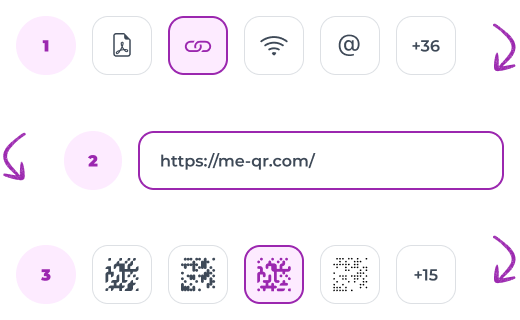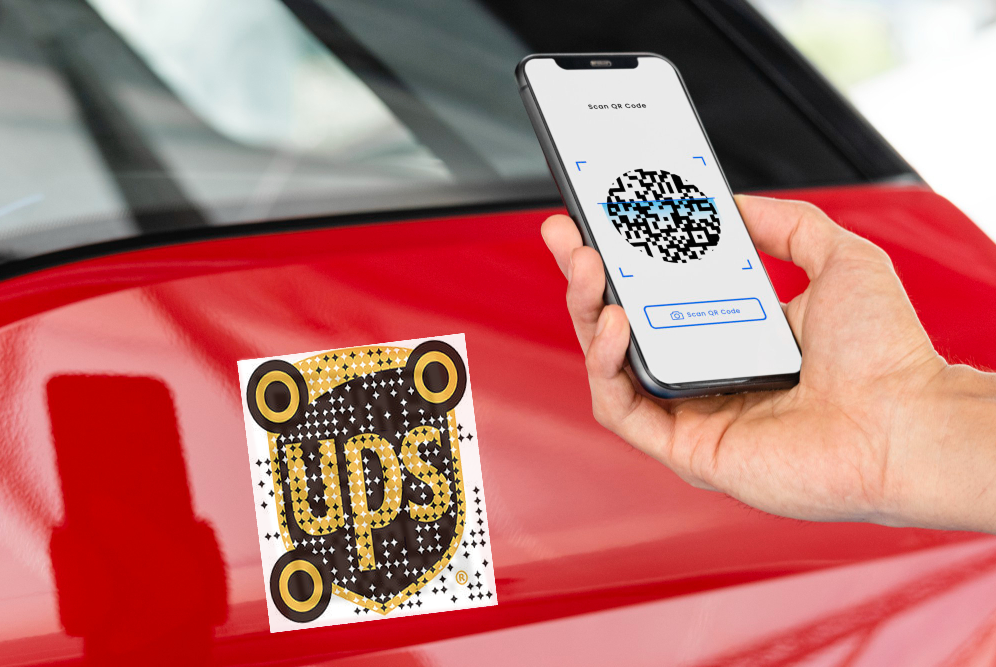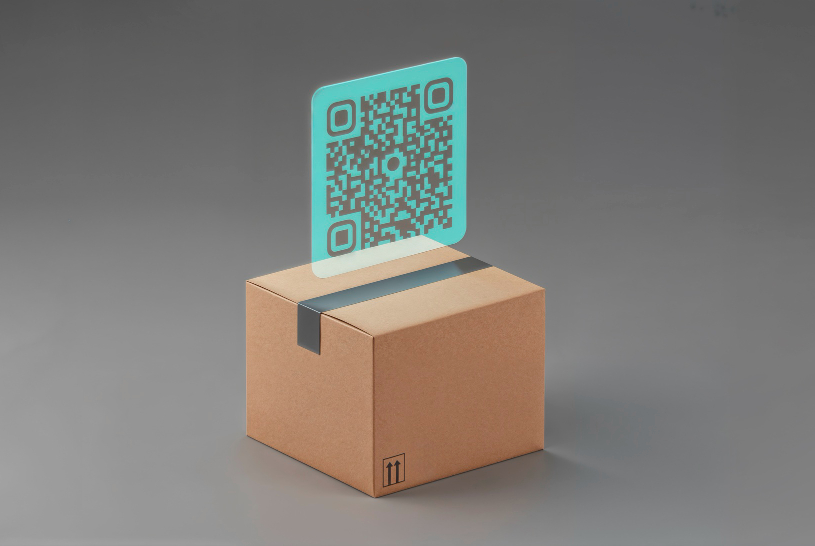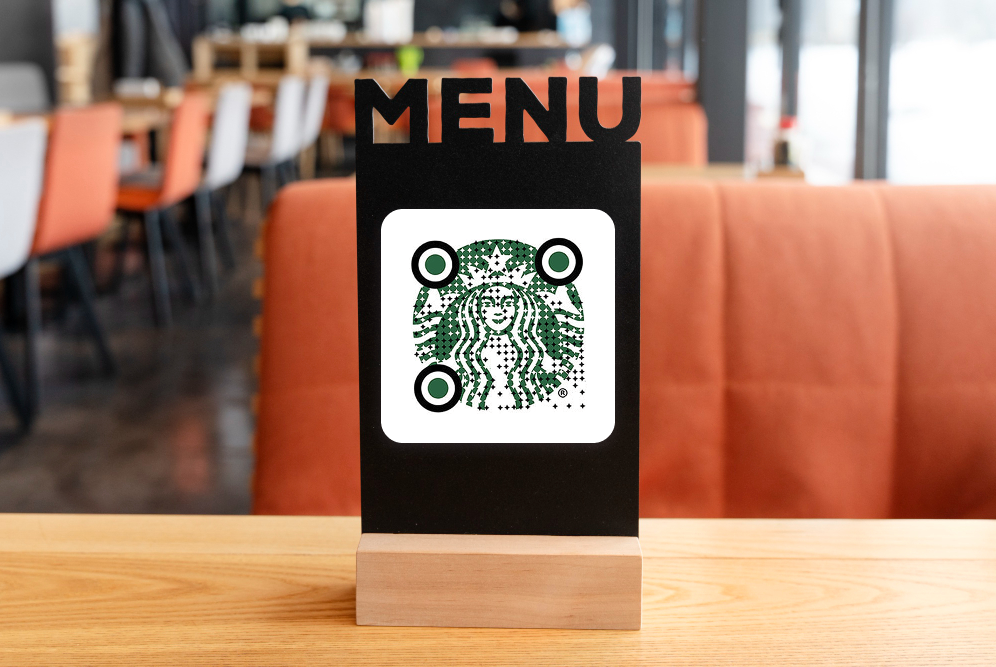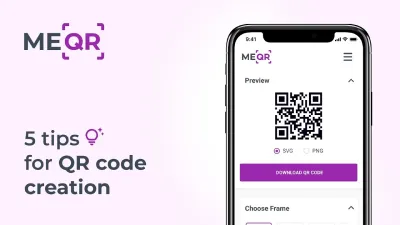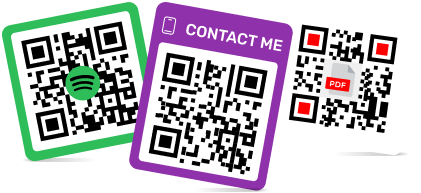QR Codes at the Airport as a Functional and Effective Tool
To create QR code for link, video or image - click on button below.


Finally, people can travel after a long break and numerous limitations. And this means that airports will be crowded again. There will be thousands of passengers as well as seers-off and welcomers. Obviously, in the current conditions, there are some risks and limitations, but thanks to the QR code generator, airports can provide people with safer and more convenient conditions.
Why Do Airports Actively Use QR Codes?
From checking in for a flight to getting detailed information about services, QR codes are multifunctional and very easy to use. On the one hand, upon applying QR codes the airport management demonstrates its concern for each passenger, and on the other hand, it simplifies and speeds up all the necessary procedures.
Today, passengers’ safety is the priority for airports and airlines cooperating with them. For this reason, the airport management prefers to use modern contactless technology that helps make a QR code using a link, image, or file in any format, as well as not use outdated and unsafe ways of interacting with people. This is reason № 1, although there are many other QR code benefits to consider.

How Does QR Code Airport Check-In Work?
QR code airport check-in revolutionizes the traditional check-in process by allowing passengers to complete their check-in online and receive a QR code on their mobile devices. This QR check-in system enables passengers to bypass physical check-in counters, reducing wait times and congestion. Upon arrival at the airport, passengers simply present their QR code at designated kiosks or checkpoints, where it is quickly scanned to verify their identity and flight details, streamlining the entire check-in process.
The use of QR codes in airport check-in enhances efficiency and convenience for both passengers and airport staff. The flying QR code can be used at various stages, such as security screenings and boarding gates, ensuring a smooth and expedited travel experience. By minimizing the need for physical documents and manual verification, QR code airport check-in significantly improves the overall efficiency of airport operations.
Examples of popular QR code types for airports
In fact, the scopes of interactive QR code applications are endless. You can generate a QR code for entertainment, advertising, personal, business purposes, etc. And among the many QR technology advantages for airports, it’s worth highlighting the TOP 5 most popular options for passengers.
1. Safe informing
The pandemic experience has taught many people to touch objects and surfaces in public places as little as possible. Using a QR code generator, you can generate a countless number of QR codes that encode the information you need, for instance, the QR code for baggage wrapping points or contactless check-in. This approach will help passengers maintain social distance and avoid unnecessary contact.


2. Goods and services advertising
The airport opens up a wide range of opportunities for online and offline advertisers. But since many people are in a hurry or focused on their personal affairs, they simply don't have time to learn more about your offer. You can create a QR code to advertise a store or establishment so passengers can check out the information later.
3. QR code for Wi-Fi
The ability to use the Internet at the airport is a matter of course. But people can get confused by the names of networks and not know which one to connect to. Display QR codes prominently in each area where a particular Wi-Fi is available, and passengers won't connect to the wrong networks. Optionally, set up a QR code for Wi-Fi with a password. In this case, you can limit access to the network, preventing possible failures due to the influx of users.


4. Parking via QR code
Airport parking is a sore subject for all drivers. If you generate QR codes for such purposes, you can significantly simplify the parking process: reduce queues and help keep visitors from being late. You can also set up a payment method for parking via the QR code.
5. Contactless registration
Multifunctional QR codes allow contactless use of check-in desks and electronic boarding passes. This approach reduces waiting times, minimizes contact with other people, reduces paperwork, and even helps take care of nature.


As you can see, the QR code generator can facilitate and improve the interaction of users with content. You can generate the code with any content to fit a wide range of airport visitor needs. Arriving in a large or small city, people will notice QR codes in a broad variety of formats: on posters, check-in counters, shop signs, etc.
It’s enough to scan the QR code through a smartphone camera or a QR scanner to get all the necessary information without contact. It upgrades the experience of being at the airport!
Benefits of Using QR Codes in Airports
The integration of QR codes in air travel operations has revolutionized the industry, providing numerous benefits to passengers and airlines alike. From streamlined check-in processes to enhanced security measures, QR codes are proving to be indispensable in modern aviation.
Streamlined Check-In Process
One of the most significant advantages of using QR codes in air travel is the streamlined check-in process. By implementing QR check-in systems, passengers can easily complete their check-in online and receive a QR code on their mobile devices. This eliminates the need for physical boarding passes, reducing wait times and congestion at the check-in counters.
Enhanced Airport Efficiency
QR codes at airports enhance operational efficiency by facilitating faster and more accurate passenger processing. Scanning a QR code at various checkpoints — such as security screenings, boarding gates, and customs — ensures that passengers move smoothly through the airport. This improves the overall passenger experience and allows airport staff to manage resources more effectively.
Secure and Reliable Ticketing
QR codes for airline tickets provide a secure and reliable method for storing passenger information. Each QR code contains encrypted data that can only be accessed by authorized personnel, ensuring the security of personal and travel information. This reduces the risk of ticket fraud and enhances the overall security of the air travel system.
Simplified Boarding Procedures
The use of boarding QR codes simplifies the boarding process significantly. Passengers can present their QR codes at the gate, where they are quickly scanned and verified. This reduces the time spent boarding the aircraft, minimizes delays, and allows for more timely departures.
Facilitating International Travel
QR codes for international travel have become increasingly important in managing cross-border passenger movements. They can store vital information such as vaccination records, travel history, and visa details. This facilitates smoother and faster processing at international checkpoints, making travel more convenient for passengers and efficient for customs officials.
Environmentally Friendly Option
The shift to QR codes in air travel operations also has environmental benefits. By reducing the reliance on paper tickets and boarding passes, airlines can decrease their environmental footprint. This move towards digital solutions aligns with the industry's goals for sustainability and eco-friendly practices.
Real-Time Updates and Notifications
QR codes enable airlines to provide passengers with real-time updates and notifications about their flights. Whether it's a change in gate number, flight delay, or boarding time, passengers can receive instant updates through their mobile devices. This enhances communication and ensures that passengers are well-informed throughout their journey.
Important Considerations for QR Codes on Boarding Passes
When utilizing QR codes on boarding passes, several key factors should be taken into account to ensure a smooth and secure travel experience:
-
Security and Data Protection: Use a secure boarding pass QR code generator that encrypts information to prevent unauthorized access. This ensures the privacy and safety of passenger data.
-
Accuracy and Readability: Ensure the boarding pass scan code is clear and precise. Poorly generated QR codes can cause scanning issues at airport checkpoints, leading to delays.
-
Compatibility with Airport Systems: Verify that the airline codes QR are compatible with different airport systems. Test the QR codes across various platforms to ensure seamless scanning.
-
Real-Time Updates: Incorporate real-time updates into the boarding QR code. Changes in gate numbers, flight delays, or boarding times can be updated through the QR code.
-
Backup Options: Encourage passengers to keep a digital copy of their boarding pass or have access to a printable version. This ensures they can proceed with their journey in case of technical issues with the QR code.
By focusing on these considerations, airlines can ensure a smooth and efficient boarding process for their passengers.
How to Generate a QR Code for a Boarding Pass Using ME-QR
Creating a QR code for a boarding pass with ME-QR is a straightforward process that ensures a seamless and efficient travel experience. Here's a step-by-step guide:
-
Visit ME-QR Website: Navigate to the ME-QR website and sign up for an account if you don't already have one.
-
Select QR Code Type: Choose the type of QR code you want to create. For a boarding pass, select the option that allows you to embed text or a URL.
-
Enter Boarding Pass Details: Input the necessary details such as your flight information, passenger name, and any other relevant information. Ensure that all the information is accurate.
-
Customize the QR Code: Customize the design of your QR code to make it unique. You can choose different colors, add a logo, or select a specific style that matches your airline’s branding.
-
Generate the QR Code: Click on the “Generate QR Code” button. ME-QR will create the QR code based on the information provided.
-
Download and Test: Download the generated QR code and test it to ensure it works correctly. Scan the QR code with a QR code reader to verify that all the information is accurately embedded and accessible.
-
Integrate with Boarding Pass: Once verified, integrate the QR code with your digital or printed boarding pass. This can be done through your airline’s booking system or by manually adding it to the boarding pass template.
By following these steps, you can efficiently generate a QR code for a boarding pass using ME-QR, ensuring a smooth and hassle-free travel experience for passengers.
Conclusion
Creating a QR code for a boarding pass using ME-QR is an effective way to enhance the travel experience for passengers. By following the straightforward steps of visiting the ME-QR website, selecting the appropriate QR code type, entering accurate boarding pass details, customizing the QR code, generating it, and ensuring it works through testing. Airlines can seamlessly integrate this technology into their operations.
This not only streamlines the boarding process but also ensures security and efficiency, ultimately leading to a more pleasant and hassle-free journey for passengers.
Updated 09.09.2024
